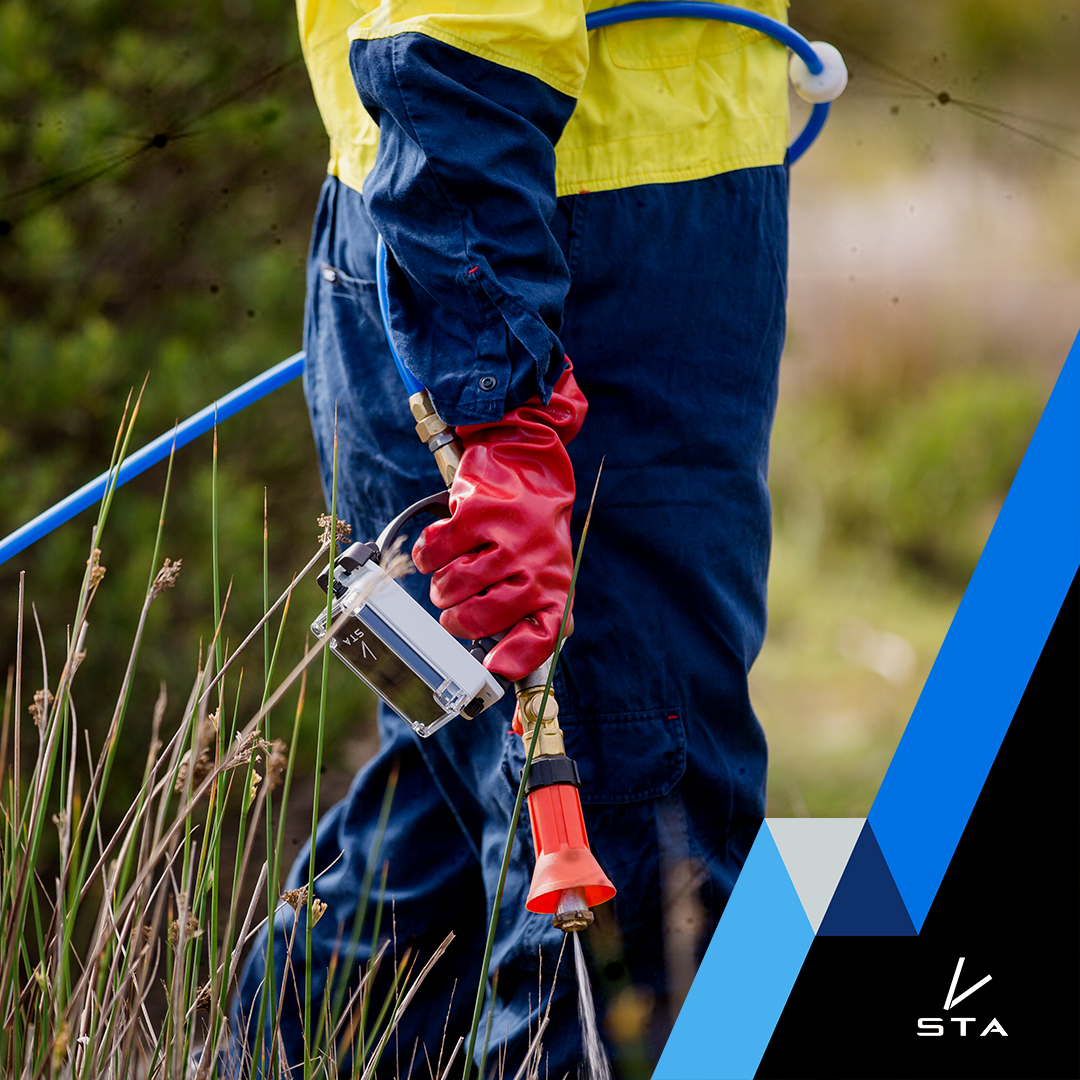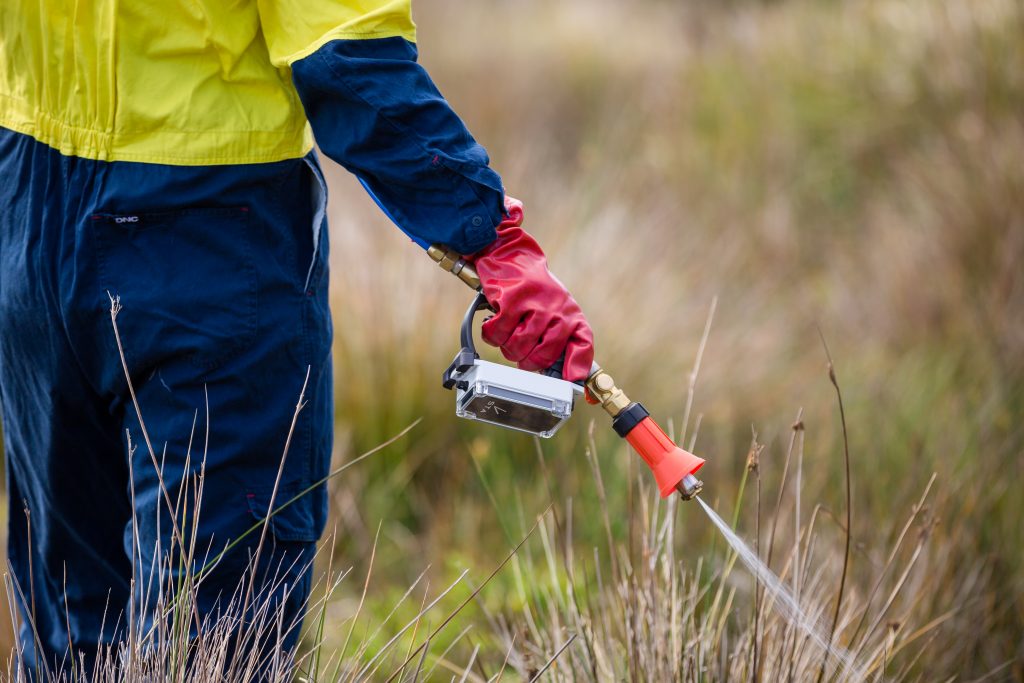Enhancing Natural Area Management: A Case Study in Council Conservation Efforts

In today’s rapidly evolving world, effective management of natural areas and the conservation of biodiversity are critical for the sustainable development of our communities. Local Government Areas (LGA’s, or Councils) in Australia play a pivotal role in overseeing the preservation of parks and reserves. With the aim of improving data quality, making informed decisions, and streamlining reporting processes, one Council has embraced the STA logger system, a revolutionary solution that retrofits to existing weed control equipment and automates the collection of site level data. In this case study, we will explore how this Council has leveraged the benefits of the STA logger to enhance their natural area management efforts.
Improving Data Quality and Efficiency:
The Council recognized the need for accurate and comprehensive data on works completed within their parks and reserves. By adopting the STA logger system, they witnessed a significant improvement in the quality of data collected. The logger’s high resolution and accuracy provided a wealth of information, enabling the Council to gain valuable insights into their weed control activities. With detailed data on equipment usage, herbicide application, and areas treated, the Council could track and monitor their conservation efforts more effectively reporting to their constituents and funding bodies with confidence.

Making Informed Management Decisions:
With the STA logger system in place, the Council now had access to rich and reliable data. This data served as a powerful tool in making informed decisions regarding the management of their parks and reserves. The Council could analyze usage patterns, identify hotspots of invasive species, and prioritize areas requiring immediate attention. By having a comprehensive understanding of the parks’ conditions, they could allocate resources more efficiently and implement targeted strategies for weed management.
Enhancing Invasive Species Management:
Building a register of known weed locations was a key priority for the Council. The STA logger system facilitated this process by automatically capturing data on weed locations during the equipment’s operation. This register proved to be an invaluable resource for the Council, enabling them to develop proactive measures to combat invasive species effectively. By continuously updating the register with accurate and up-to-date information, the Council was able to stay one step ahead in their weed control efforts.
Improving Reporting Efficiency:
Conservation works conducted in parks and reserves require detailed reporting to demonstrate compliance with legislative requirements and highlight to Councils constituents that they are using herbicide in public places responsibly. The STA logger system streamlined the reporting process for the Council, significantly improving both the quality and efficiency of their reporting. The logger’s automated data collection eliminated the need for manual data entry, reducing the risk of errors and saving valuable time for Council staff. The data was readily available in the cloud-based web application, allowing for easy access and retrieval whenever needed.
Integration with Existing GIS Infrastructure:
Seamless integration with the Council’s existing Geographic Information System (GIS) infrastructure was a crucial requirement for the successful implementation of the STA logger system. The data collected by the loggers seamlessly flowed into the Council’s GIS, providing a comprehensive and holistic view of their natural areas. This integration enabled the Council to overlay the STA logger data with other spatial information, facilitating data-driven decision-making and supporting effective planning and management strategies.
Expanding Adoption to Contractors:
Recognizing the value and reliability of the STA logger system, the Council became heavily reliant on the data it provided. So confident in its benefits, they began recommending its adoption to their contractors as well. By extending the use of the STA logger system to contractors, the Council aimed to standardize data collection practices and ensure consistency across all weed control activities within their jurisdiction. This collaborative approach created a unified and streamlined process, further enhancing the Council’s natural area management efforts.

The STA logger system has revolutionized the natural area management efforts of this Council, providing them with accurate, efficient, and data-rich insights. By improving data quality, facilitating informed decision-making, enhancing invasive species management, streamlining reporting processes, and integrating with existing GIS infrastructure, the Council has experienced a remarkable transformation in their conservation practices.
With the STA logger system, the Council has gained a comprehensive understanding of their parks and reserves, enabling them to allocate resources effectively and prioritize areas requiring immediate attention. The automated data collection and reporting processes have significantly reduced administrative burdens and improved overall efficiency. The register of known weed locations has empowered the Council to develop targeted strategies for invasive species management, safeguarding the biodiversity of their natural areas.
Furthermore, the seamless integration of the STA logger system with the Council’s existing GIS infrastructure has created a unified platform for data analysis and visualization. This integration has supported data-driven decision-making and enabled the Council to collaborate more effectively with stakeholders involved in natural area management.
The Council’s endorsement of the STA logger system to their contractors highlights its reliability and value. By expanding its adoption, the Council ensures consistent and standardized data collection practices across all weed control activities within their jurisdiction, further enhancing their ability to manage and preserve their natural areas.
The case study of this Council demonstrates the transformative impact of the STA logger system on natural area management. Its accurate data collection, efficient reporting processes, and integration capabilities have empowered the Council to make informed decisions, effectively manage invasive species, and uphold their commitment to responsible herbicide use. The STA logger system serves as a valuable tool in their ongoing efforts to protect and preserve the natural beauty and biodiversity of their parks and reserves.
Recent Posts

STA logger onboarding
Read More »
So, why the STA logger?
Read More »
Weed mapping data and government databases
Read More »
Measure herbicide output with the STA logger
Read More »
